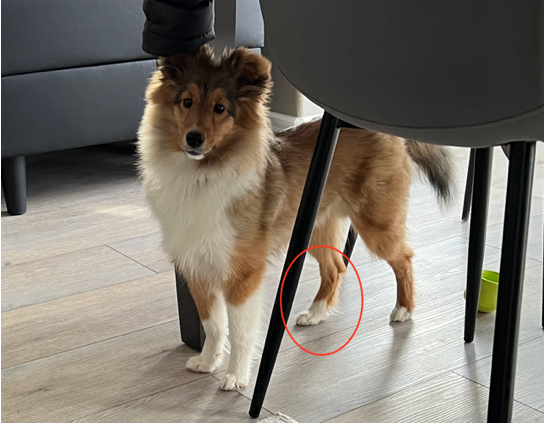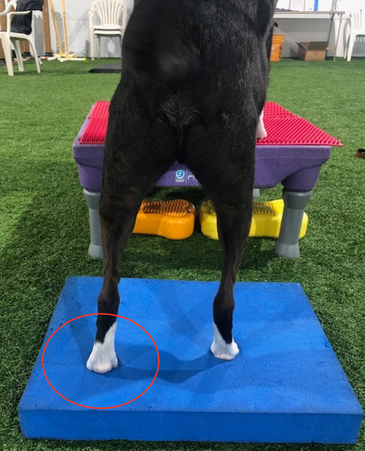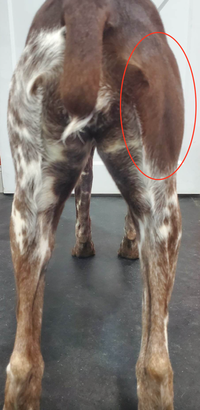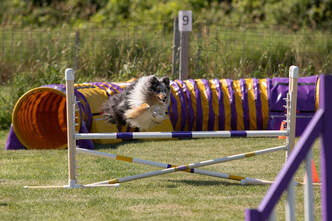|
What if I told you that many of the canine athletes I assess at my rehab clinic started showing minor, subtle signs of their injury MONTHS before ever booking an appointment with me? Could you recognize these signs with 100% confidence? I wrote this blog to help owners, trainers, and health professionals identify the subtle signs of pain in agility dogs so that injuries, compensation patterns, side preferences, and weaknesses can be identified earlier. With over 15 years of practice as a physiotherapist, one cornerstone of my approach is educating and proactively managing human and dog health care. When injured dogs come into my clinic, and I review the history with the owners, there are generally many signs that start to show up weeks and even months before the owner notices that something is “off” with their dog and an injury is brewing. Let’s dive into the WHY. Why do so many injuries go undetected?
Signs of pain in ANY dog can be classified into acute and chronic. What is acute pain?It is a sudden onset pain that you can’t miss. It is known as adaptive pain and makes our dogs aware that they are injured or ill and should start to slow down to prevent damage and protect the body. Dogs with acute pain will vocalize and show signs of lameness with various posture changes. In these cases, getting your dog to its veterinarian is usually required. What is chronic pain?
It is critical to understand the signs of chronic pain in your dog. Failure to do so can result in more significant maladaptive changes in our dogs (e.g. compensation patterns, further muscle imbalances), which can increase pain severity and puts our dogs at an increased risk of injury. In addition, it should be noted that you are looking for deviations from your dog's normal mental and physical behaviours.  My puppy, Siren, started to display a forward right-hind limb stance, which was atypical of her normal balanced stance. Upon further evaluation, she had an asymmetrical pelvic alignment causing her to shift one leg forward to reduce discomfort. Following physio treatment to correct this asymmetry she has returned to her balanced standing position. Subtle signs of general pain in our dogs:
In addition to these general signs of pain, there are subtle signs specific to our agility dogs. It is first vital to understand how our dogs normally move and complete the various obstacles in agility. Why? This will help us detect possible deviations from the expected (correct) movement patterns. The list below assumes your dog’s performance has been reliable and trained. Remember, you are looking for deviations in how your dog moves typically, runs and completes each obstacle. Subtle Signs of Pain in Our Agility Dogs:
Our agility dogs often display several of these signs – not just one. Just because your dog turns wide on one jump does not mean they have a pain issue and must be pulled and rushed to the vet! You have to look at the whole picture – was your timing off? Did you give your dog your physical and/or verbal cue in time? Is this a new problem? Does your dog have the proper training to execute the desired obstacle or sequence? Agility is a complex sport that heavily relies on the proper timing of our cues for our dogs to navigate a course successfully! Therefore, we have to be critical in our thinking and approach any performance deviations logically. In Part 2 of our next blog, we will provide tips to help you detect the subtle signs of pain in your agility dog sooner! Knowledge is power. The more aware you are of your dog’s typical movement patterns both in life and in sport, the more likely you will detect deviations from this earlier which can help your dog:
SPOILER ALERT!Not only will you learn my top tips to help recognize these subtle signs of pain, BUT we will be offering a glimpse into our NEW Fit Dog Home Evaluation (FDHE) to help detect your dog’s side preferences, imbalances, weaknesses or avoidances to specific movements. Would you like to know your dog’s tendencies and if they are moving correctly and balanced? You are going to want to take advantage of this blog. So be sure you have subscribed to our page to be the first to access the second part of this blog, coming out on May 12th. Please add your name below if you aren't on our email list yet.
0 Comments
Leave a Reply. |
AuthorCarolyn McIntyre Archives
June 2024
Categories
All
|




 RSS Feed
RSS Feed